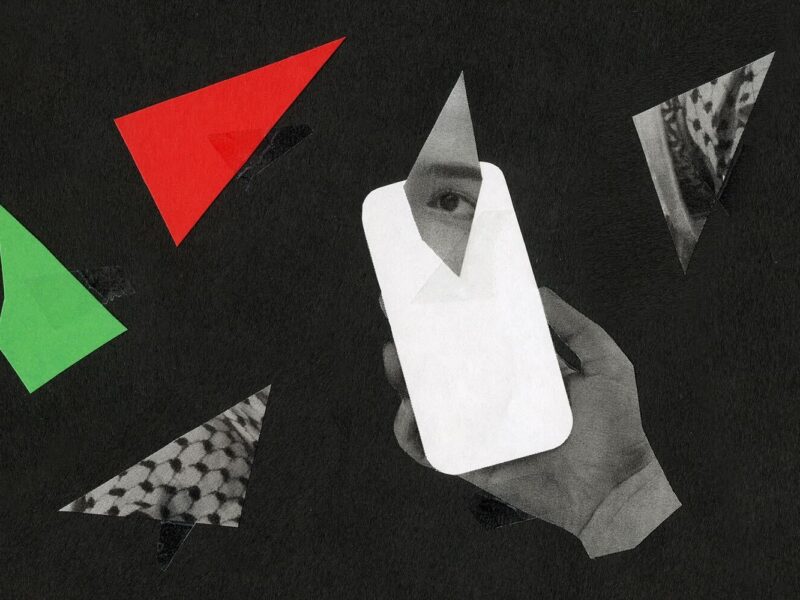After two years of living under stringent pandemic protocols, Canadians are fed up. They might not agree with the freedom convoy’s politics, but they understand their feeling of resentment.
“You’re taking the swastika out of context!”
I sat there wondering if someone had dosed my coffee with LSD.
“Excuse me?”
I could feel her seething on the other end of the telephone as she prepared to walk me through the ins and outs of Nazi iconography etiquette. Annette is a patient woman. She runs a private daycare in the suburbs north of Montreal — the kind of place that teaches toddlers to use sign language so they can tell their parents when they’re thirsty or need a fresh diaper.
But the swastika thing is testing her limits.
Two weeks ago, when a group calling itself the “Freedom Convoy” flooded downtown Ottawa with tractor trailers and an estimated 8,000 protesters, people were seen flying a Canadian flag with swastikas etched into it. There were a few, actually.
When I mentioned this to Annette, asking her why a protest about ending vaccine mandates and COVID-19 restrictions seemed like such an inviting place for extremists, she took a deep breath. Annette, who supports the convoy, told me the symbol of the Third Reich on Parliament Hill wasn’t meant to be taken literally.
“It’s not a Nazi swastika, well it is but it’s not a pro-Nazi swastika. Okay, that sounds bad. It’s a comment on how Canada has become a fascist state with all these COVID restrictions.”
“So it’s an ironic swastika?” I replied.
“Yes,” she said, sounding relieved.
“But what about the actual Nazi flag?”
I swear I heard Annette’s palm hit her forehead. We agreed to change subjects.
The problem with Canada’s Freedom Convoy isn’t people like Annette. Well, it is and it isn’t.
Annette is triple vaccinated. She respects all of the COVID protocols and even voted for Justin Trudeau’s Liberal government three times. But after two years of living with the ebbs and flows of a virus and restrictions that can feel improvised at the best of times, Annette is fed up. Which is understandable.
In Quebec—which has the most stringent COVID protocols of any province—an estimated two million people have contracted the Omicron variant since it arrived last fall. That’s roughly a quarter of my home province’s population. Of course, this is just an estimate since the latest wave wiped out Quebec’s testing capacity.
Annette’s frustration is perfectly normal. Where things get more complicated is that while the Freedom Convoy is supported by a small but sizeable minority of Canadians from all walks of life, it’s being led by a coalition with ties to American extremists like the Three Percenters militia, QAnon and even one former Trump staffer who’s helping with strategy on the frontlines.
But there are distinctly Canadian elements to the convoy as well. Alberta’s ultra-conservative “WEXIT” secessionists and Quebec’s Europe-inspired far right are both flying their colours on Parliament Hill. I’d be remiss if I didn’t mention sightings of a few Proud Boys at the rally two weeks ago. Founded by Canadian Gavin McInnes, the Proud Boys were recently designated a terrorist group by Trudeau’s government because of their penchant for insurrection and political violence.
The convoy’s logistics and messaging is handled by a group called Canada Unity, which is a mishmash of classic Canadian grievances — the Liberal government has never had a strong presence in Conservative strongholds like the prairies and rural Ontario, which only fuels a sense of mutual resentment — the French populist gilets jaunes (Yellow Vest) movement and American-style alt-right tactics.
Far-right activist Pat King is a major figure in the WEXIT campaign, which advocates for Alberta to secede from Canada; many in the oil-producing province resent their tax dollars going to the federal government’s coffers. Western alienation has been a central theme of Canadian politics since Trudeau’s father Pierre Elliot Trudeau was prime minister in the 1970s.
What’s different from past western protest movements is that Albertans are finding common ground with Quebec conservatives. Traditionally, these two groups aren’t even on speaking terms—partly because they speak different languages, but also because each sees the other as taking up too much space in the national conversation. But they appear to be finding common ground over their shared resentment of Trudeau and his multiculturalist view of Canada.
King also organized attacks on anti-racist demonstrators last year in northern Alberta, referring to his roughneck crew as “Patriots” — which certainly rings a bell to American ears. He says Muslim immigration will lead to the “depopulation of the caucasian race” which is a common theme for both the American and European far right. James Bauder, a leader of the far-right movement Canada Unity (in which King is also active), authored a “Memorandum of Understanding” that would force Canada’s unelected head of state, Governor General Mary Simon, and its unelected senate to negotiate with protesters and ultimately force Canada’s elected government to “resign their lawful positions” if they don’t meet the convoy’s demands.
A constitutional lawyer friend who looked through the document called it “somewhere between political witchcraft and January 6 fan fiction.”
Here, too, Canadians feel the influence of their southern neighbours, where far right activists and conspiracy theorists justified their attempt to overturn the presidential election on January 6, 2021 with an archaic and inconsistent reading of the U.S. Constitution.
And then there’s the question of who’s funding this thing. Political parties in Canada don’t raise money at nearly the rate of their American counterparts. Elections are almost entirely funded by the state and overseen by a robust arms-length entity, Elections Canada. For context, the Conservative Party of Canada raised $13 million in the second half of 2020 — more than any other party in the country during that period.
In the U.S. that kind of cash barely finances a down ballot congressional race.
So how is it that Canadians, who are notoriously thrifty when it comes to politics, put together a $10 million war chest for the Freedom Convoy in under two weeks? Most of that money, raised on the American GoFundMe platform, was frozen by the company because there was no way of tracking how it would be spent.
The federal government has since called on GoFundMe executives to testify before Parliament as to the source of this cash.
Determined not be thwarted by financial oversight, the Freedom convoy turned to GiveSendGo — the Christian platform that collected millions in donations for Kyle Rittenhouse — to keep their movement alive. It didn’t take long for millions more in donations to pour into the Convoy’s cause. This isn’t typical of Canadian politics.
QAnon slogans like “Free the Children” and “WWG1WWA” are scattered throughout the Ottawa site, alongside signs calling for Trudeau to be jailed and tried for treason, which bring some real “lock her up” vibes.
Perhaps the most frightening aspect of the Freedom Convoy is the ease with which journalists are harassed, attacked and threatened by supporters. In Alberta—where satellite protests are being staged—a reporter from CTV News tweeted a picture of himself removing the station’s logo from its TV truck to avoid being targeted by mob violence.
“It’s just not safe right now,” CTV reporter Justin Thompson wrote.
In Ontario, supporters of the convoy smashed the windows of a van belonging to Radio Canada, the French-language national broadcaster. The Quebec-based TVA Nouvelles started sending security guards alongside its reporters when covering the convoy’s Ottawa encampment. Meanwhile, the Canadian Association of Journalists reports that members covering the protest have been spat on and shoved, and have received countless death threats since the outset of the movement.
Last week, during a “press conference” organized by the convoy’s leaders, CTV News was barred from the event because organizers wanted to “(teach) the fake news industry what news is.” Again, this must sound familiar to Americans.
I’ve written just one article about the Freedom Convoy and some of its more enthusiastic supporters have threatened to stab, shoot, and hang me.
Adding another degree of American weirdness to the mix, former Trump administration advisor Paul Alexander has been on the frontlines of the protest, helping with strategy and sitting in on meetings with leadership.
For the residents of Canada’s notoriously boring capital city, life has been upended. A friend of mine, who works as an interpreter on Parliament Hill, told me she doesn’t feel safe at night walking past the encampment. But she also says she’s been so angry that she flips them off on her way to work every morning and struggles to suppress the urge to instigate a fight with them.
“I’m just looking for an excuse to throw a punch,” she said.
Here’s something an American audience might not realize. Canadians are perfectly capable of committing political violence independently of any outside influence. Though we may not have the American appetite for revolution, this country’s wealth is derived from stolen Indigenous land and ongoing colonial violence. But I digress.
Which brings me back to Annette.
We grew up in the same small town, where a huge percentage of our parents worked in the machine shops building airplanes for Bombardier, an aeronautics giant based out of Quebec. That changed after 9/11, when Canada’s aeronautics industry collapsed. Thousands of workers were laid off and while unemployment approached historic lows ahead of the pandemic, the years of a steady, well-paid job and access to home ownership feel like something that’s dying with our parents’ generation.
This too mirrors the economic anxiety of our southern neighbours. The Obama presidency may have turned the tide on the 2008 housing market collapse but income inequality persists and average household wealth hasn’t returned to pre-recession numbers.
So a lot of people — like Annette’s machinist husband — are living through an endless cycle of being laid off, hired again and then tossed back to the wilderness when the economy takes a dip. Meanwhile, companies like Bombardier get giant government bailouts even though they fail to meet benchmarks, continue laying off workers and rewarding their inept executives with millions in bonuses.
Add two years of COVID-19 to that and it seems only to have accelerated the frustration in Annette’s household.
“It’s time for this to end, I don’t recognize life in this country anymore,” she said. “We’re told to put our lives on hold and then start again and then put them back on hold. We have a set of rules that are constantly changing. Some of us have been vaccinated three times. What’s the end game here? Why are we being treated like idiots?
“I’m not a violent person, I am against the violence in the Freedom Convoy but I’m also angrier than I’ve ever been.”
U.S. influence among supporters of the Freedom Convoy is obvious but much of the anger fueling these protests has elements of western-Canadian alienation, resentment for a Liberal government that’s been in power 21 of the last 30 years and anxiety over a rapidly changing Canadian economy. Some of the far right elements of the movement have an American feel to them but there’s an anti-immigrant, Islamophobic segment of the protest that mirrors European conservative movements like Brexit, Front National or Éric Zémmour’s ultra nationalist Reconquête party.
The most worrisome aspect of the protest is how rapidly it was embraced by American conservatives with deep pockets, access to weapons and a wealth of knowledge about attacking democratic institutions.
Perhaps it’s just the LSD in my coffee making me paranoid but that seems like a dangerous combination. After all, we share the world’s longest international border.



